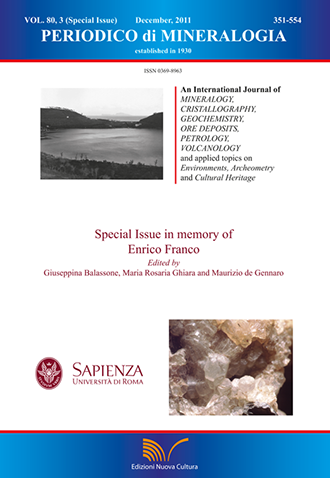Secondary hydrothermal minerals in buried rocks at the Campi Flegrei caldera, Italy: a possible tool to understand the rock-physics and to assess the state of the volcanic system
DOI:
https://doi.org/10.2451/2011PM0027Keywords:
Campi Flegrei, elastic proprieties, geothermal system, hydrothermal minerals, volcanismAbstract
The distribution of the alteration assemblages and the related physico-chemical changes induced in the rocks with depth, may provide useful information on the state of the system. Drillholes are the only way to define hydrothermal alteration depth-profiles in variable geological contexts. Deep drillings exploiting programs were conducted since the 1970’s by the Agip-Enel Joint Venture in the Quaternary Campi Flegrei caldera (southern Italy), where a geothermal system has been active since at least historical times. New macroscopic and microscopic investigations were performed on selected samples made available by Agip in order to: 1) define the precursor lithology, 2) describe the relationships among texture, mineralogy and depth of the studied core samples and 3) examine the character of the secondary minerals and their distribution with depth and temperature. The new data are integrated with physical properties and elastic parameters of cored rocks, as well as structural information and field data, all available from the physical, seismological, geodetical and volcanological literature. The depth-related multi-parameters profiles provide evidence on the different behavior of the buried rocks beneath the Licola 1, Mofete and San Vito 1 areas, sited in three structurally different sectors of the caldera. The features of the hydrothermally altered rocks are a key to interpret the heterogeneities of the Campi Flegrei substratum, as deduced by velocity, attenuation and scattering P- and S- waves tomography. The time and space distribution of both the eruptive vents and the extruded magma volumes are consistent with the results of our analysis. Therefore, we interpret the observed Campi Flegrei geothermal system as a response to the distribution of volcanic activity in two structurally distinct sectors of the caldera. The central-eastern sector, where the San Vito 1 well was drilled, represents the preferential pathways for both gas escape and magma ascent at least since 8 kyrs, in contrast with the other sites of the caldera where eruptions occurred with minor frequency and magnitude.


